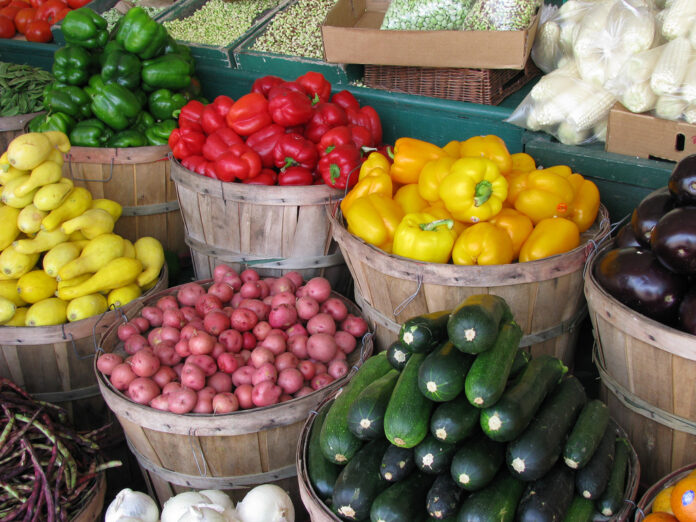“I harvested my pumpkins and I need someone to buy them ….” This is a common message on most agriculture-oriented online forums. A week hardly passes by without such a post.
Another one is: “Hello farmers … I need some advice, I want to start farming but do not know which crop I should start with … I need something that grows in a short period and less labour for the start…”
Media coverage on how farming pays is leading many to try their luck. From corporate tele-farmers (office workers who dabble in farming) to retired-into-farming types, many have financial gain in mind.
The most disturbing trend I have noticed though, is those who whip out calculators and compute the cost of growing a crop in comparison to the projected revenues. Once they are convinced about the margins, they dive into the deep end.
A newbie farmer ventured into growing watermelons by starting with five acres. Due to inconsistencies in how the farm helps handled the watering, she registered a huge loss from massive crop failure. She nearly quit. Another one almost beat up a middleman who, despite agreeing upfront on the price, wanted to under-cut him by over 30 per cent on the day of collection.
Investing in farming requires one to have a market-first approach. Who are you producing for? How will you reach them? What are their specific requirements? What is the perishability of your produce? What value addition can you possibly add?
Who are you producing for?
One needs to know who they are producing for. Is it the urban consumer in the open-air markets like Marikiti or are they supermarket shoppers? Could it be any consumer, urban and rural, or factories that offer value addition to produce? Are you supplying an exporter who is sending produce to markets like EU and US?
Depending on your target, it determines the level of investment you have to undertake complete with aspects like revenue projections, payment plans and the risk. Take the case of a farmer who chooses to produce specialised spices targeting an exporter to Europe.
Six most profitable crops per acre that have made several Kenyans millionaires
Upon harvesting, this farmer is wholly dependent on the price offer from the exporter and hardly has any opportunity to offload the produce on an alternative market. Sometimes, the produce may fall short of the expectations and four months’ worth of labour and financial resources goes belly up.
In case, you are dealing with perishable produce like mangoes, bananas, tomatoes, water melons, you have to be aware that the time to sell is very limited. Even when you bring the produce to the market, many of the market vendors will dilly dally until you are desperate that you offload it to avoid it going bad. End result: You sell at a very low price. Knowing who you are producing for helps set the right expectations as well as manage the eventualities.
How will you reach them?
How do you get your produce to the urban consumer? Will you opt for a middleman who will undertake the risk of accessing the remote markets or do you plan to transport it yourself and face it off with the consumer? Should you expect the produce to be picked up at farm gate?
Grains offer the advantage of longer shelf life and can be stored at a minimal cost in anticipation of a good deal. However, perishables require meticulous handling to avoid losses. A common scene is what happens when fish farmers take their fish to market. Due to lack of refrigeration facilities, they used a Probox or pickup to transport it. Upon arrival, he was unable to sell immediately due to the delaying tactics the vendors were using to push for a price reduction.
By 3pm, he was desperate as he realized a potentially huge loss if it went bad without selling. Always ensure the right market access channels and facilities to minimize post harvest losses.
What are their specific requirements?
Different markets have different requirements. Local consumers do not really care about buying a bunch of bananas with blisters, while a European consumer will not buy such a banana. This implies that as you produce for export, ensure the systems—from the garden to packaging and transportation—are right to prevent the occurrence of blisters.
The beans one buys from a supermarket are clean and free of foreign matter while beans sold in the traditional market are likely to have chaff, which calls for sorting. The supermarket customer’s expectations are more stringent than the traditional open-air market. This is reflected in the amount of money they are ready to pay.
Many are fooled into thinking that quality is largely a result of how you handle a product after harvesting. This is part of the story. A quality product is managed from seed selection through planting to post-harvest handling. Therefore, as you plan, know what they need in order to avoid discouraging pitfalls.
What value addition can you offer?
I grow rice as one of my farming activities but I never sell it in husks or after milling to traders around the mills. I always prefer to have the rice sorted, made free of impurities as well as having the whole grain rice separated from the broken rice.
This allows me to differentiate my pricing. When I put it on the market, the amount earned is higher. That is what value addition brings on board.
What value do you add onto your produce? Did you know that that making jam from tree tomato or water melon covers is the easiest thing? How much can you save people who have become slaves of purchasing “Blueband” for bread? The tomatoes you consider rotten are very ideal for making tomato sauce. Just Google.
Adding value broadens your markets and reliance on one customer segment ceases. This allows you to not only make more money from the limited produce but also turns you into a high-value producer.
The bottom line
It is therefore advisable that before you rush into the farming craze, you get a full understanding of what you are getting yourself into especially the market you want to serve since that is what determines your bottom line.
Asking others to decide for you what to plant is like asking people around you to determine what professional career you should pursue.








